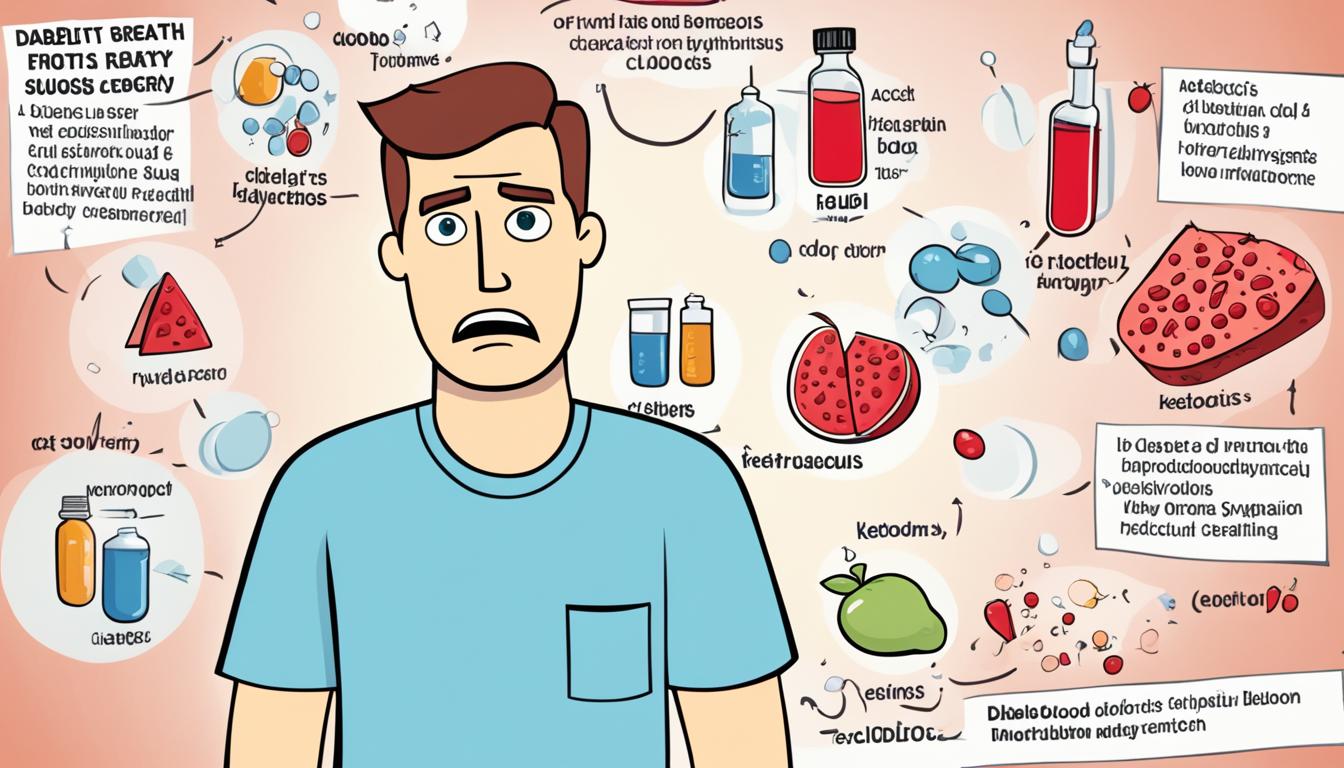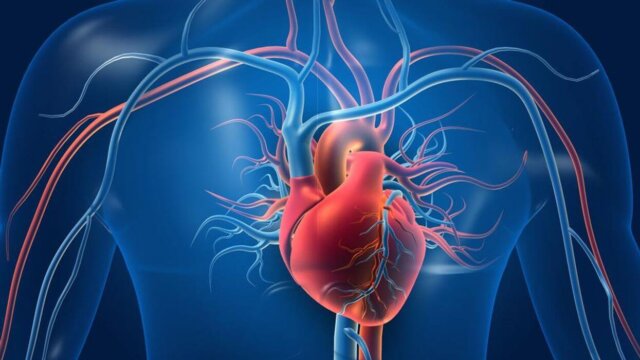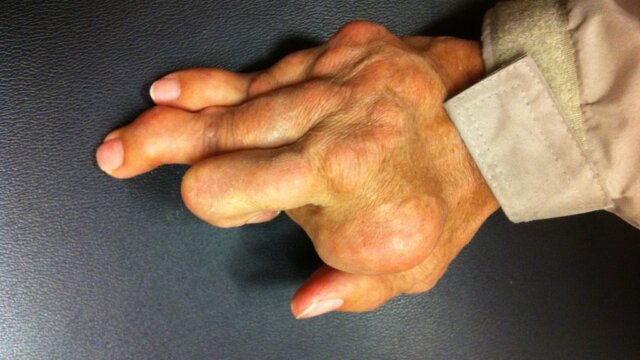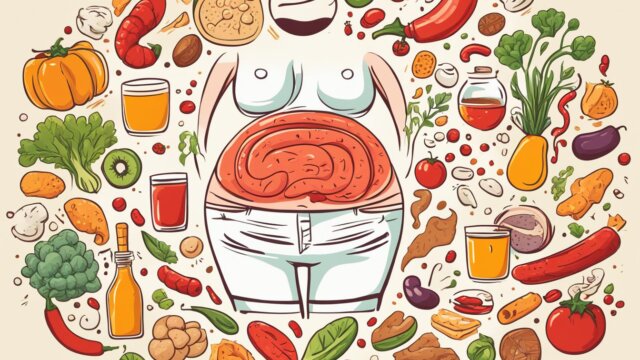FTC disclaimer: This post may contains affiliate links and we will be compensated if you click on a link and make a purchase.
Diabetic ketoacidosis (DKA) is a serious condition that happens in nearly 200,000 Americans each year. It happens when the body doesn’t have enough insulin. This makes it break down fat for fuel, creating harmful acids called ketones. If these acids build up, the blood can become too acidic, which is a medical emergency.
It’s important to know about DKA’s causes, signs, and treatment. This guide will help you spot early signs and get the right medical help. It’s key to managing diabetes and keeping you safe.
Key Takeaways
- Diabetic ketoacidosis is a serious diabetes complication caused by not having enough insulin and building up harmful acids called ketones.
- Symptoms of DKA can show up fast, sometimes in just 24 hours, and might be the first sign of diabetes.
- DKA is more common in people with type 1 diabetes, especially if they forget to take their insulin.
- Quick treatment with fluids, electrolytes, and insulin is key to avoiding serious problems like low blood sugar, low potassium, and swelling in the brain.
- Preventing DKA means managing diabetes well through a healthy lifestyle and sticking to your doctor’s advice.
What is Diabetic Ketoacidosis?
Overview of Diabetic Ketoacidosis
Diabetic ketoacidosis (DKA) is a serious diabetes complication. It happens when the body lacks enough insulin. Insulin helps sugar, the body’s main energy source, get into cells. Without enough insulin, the body starts to break down fat for energy, making acids called ketones.
If there are too many ketones, the blood can become too acidic. This is a life-threatening condition called diabetic ketoacidosis.
DKA is a medical emergency that needs quick treatment to avoid serious problems or death. It might be the first sign of type 1 diabetes in people who haven’t been diagnosed yet. It can also happen in those with type 2 diabetes who use insulin. It’s important to know the signs and get help right away to manage this serious diabetes issue.
DKA often starts slowly, showing signs like being very thirsty, needing to pee a lot, and other signs of high blood sugar. But it can get worse fast, causing symptoms like breathing quickly and having a sweet smell on the breath. Quick action is key to fixing the insulin shortage, balancing fluids and electrolytes, and stopping serious problems.
Symptoms of Diabetic Ketoacidosis
The symptoms of diabetic ketoacidosis (DKA) can show up fast, often in just 24 hours. If not treated, DKA can turn into a serious condition. The main symptoms are:
- Excessive thirst and frequent urination because the body tries to get rid of too much sugar and ketones.
- Nausea and vomiting, which can make you dehydrated.
- Abdominal pain, found in up to 42.2% of DKA cases.
- Weakness and fatigue because the body can’t use glucose for energy.
- Shortness of breath, or Kussmaul breathing, seen in 14.0% of cases.
- Fruity-scented breath from acetone, a fat breakdown product.
- Confusion and drowsiness, which can turn into a coma if not treated.
Getting medical help fast is key if you have these symptoms, as DKA can be deadly. Checking your blood sugar and ketone levels at home can spot DKA early, helping you get help quickly.
DKA happens more often in type 1 diabetes patients but can also affect type 2 diabetes patients. Spotting and treating DKA early is key to avoiding serious health issues.
Causes of Diabetic Ketoacidosis
Factors Contributing to Diabetic Ketoacidosis
Diabetic ketoacidosis (DKA) happens when there’s not enough insulin in the body. Without insulin, the body can’t use sugar for energy. It starts breaking down fat instead, making acids called ketones. This leads to DKA. Many things can cause this serious problem, like being sick, missing insulin doses, or having trouble with insulin therapy.
Being sick, like with pneumonia or a urinary tract infection, can make DKA worse. It does this by making hormones that make it hard for the body to use insulin. Missing insulin doses or problems with insulin therapy can also cause DKA.
Physical or emotional trauma, like a heart attack or stroke, can mess with insulin levels and cause DKA. Being pregnant, using drugs or alcohol, or taking certain medicines can also lead to insulin problems and DKA.
Any issue that makes insulin levels drop can raise the risk of DKA. It’s important to deal with these issues quickly to prevent this serious condition.
| Factors Contributing to Diabetic Ketoacidosis |
|---|
| Illness (e.g., pneumonia, urinary tract infections) |
| Missed insulin doses |
| Problems with insulin therapy |
| Physical or emotional trauma (e.g., heart attack, stroke, pancreatitis) |
| Pregnancy |
| Alcohol or drug misuse |
| Certain medications (e.g., corticosteroids, diuretics) |
“Prompt recognition and treatment of these underlying factors are crucial in managing and preventing this life-threatening complication.”
Risk Factors for Diabetic Ketoacidosis
Diabetic ketoacidosis (DKA) is a serious condition that can happen to people with type 1 diabetes, and sometimes type 2 diabetes. Knowing what increases the risk of DKA is key. It helps you prevent this dangerous condition.
Missing insulin doses is a big risk factor for DKA. People with type 1 diabetes who often skip their insulin shots are more likely to get DKA. Also, those newly diagnosed with diabetes, especially type 1, are at higher risk. They might not know how to manage their diabetes yet.
Not having easy access to insulin also raises the risk of DKA. If people with diabetes can’t get insulin easily, they might miss doses or use less than needed. This can lead to DKA.
Other things that increase the risk of DKA include a family history of diabetes or autoimmune diseases. Missing meals can also be a risk, as it can mess with insulin levels and lead to DKA. Some medicines, like antipsychotics, corticosteroids, and thiazide diuretics, can make DKA more likely.
Medical conditions like alcohol or drug use disorders, eating disorders, Cushing syndrome, hyperthyroidism, recent surgery, or pregnancy can also raise the risk of DKA.
By knowing these risks, people with diabetes can prevent DKA. They should watch their blood sugar closely, follow their diabetes plan, and get help if they notice any warning signs.

Testing for Diabetic Ketoacidosis
Ketone Testing and Monitoring
If your blood sugar is over 240 mg/dL, check your ketone levels with a urine or blood test. Diabetic ketoacidosis (DKA) starts when blood sugar hits 250 mg/dL. Call your doctor if your blood sugar is off target. Get emergency help if your blood sugar is 300 mg/dL or up, or if you feel very tired, throw up a lot, or can’t breathe well.
People with type 1 diabetes are more likely to get DKA. Those with type 1 diabetes or who often forget to take insulin are at higher risk. Things like heart attacks, strokes, or too much stress can also lead to DKA.
You can buy urine ketone test strips without a prescription. They show ketones from hours ago. These tests are cheaper but might not be as accurate if you’re not drinking enough water. Blood ketone tests show levels from under 0.6 mmol/L to over 3mmol/L. High levels mean you’re at risk of a serious condition that needs hospital care.
To prevent DKA, test your blood sugar often, take your medicine as told, adjust your insulin if needed, and check for ketones when sick. Waiting too long to treat DKA can cause serious problems like kidney failure or death. Starting treatment early can help you fully recover.
Treatment for Diabetic Ketoacidosis
Diabetic ketoacidosis is a serious condition that needs quick medical help. It requires fluids, electrolytes, and insulin to fix the body’s balance.
The main goals are to fix fluid and electrolyte levels, lower blood sugar, and treat the illness that caused it. This usually starts in the emergency room or hospital. Doctors can watch the patient closely and give the right treatments.
- Fluid replacement: IV fluids help with dehydration and lower blood sugar levels. This brings back normal fluid and electrolyte balance.
- Electrolyte replacement: Electrolytes like sodium, potassium, and chloride get low because of frequent urination. IV fluids add these back to keep balance.
- Insulin therapy: Insulin is given through a vein to lower blood sugar and stop ketoacidosis. This can take hours or days, based on how bad it is.
- Underlying illness treatment: If an infection or illness causes ketoacidosis, treating that is also key. This might mean antibiotics or other treatments for the underlying issue.
Quick action and treatment for diabetic ketoacidosis are key to avoiding problems and helping the patient get better. Doctors watch the patient and change the treatment as needed for a good recovery.
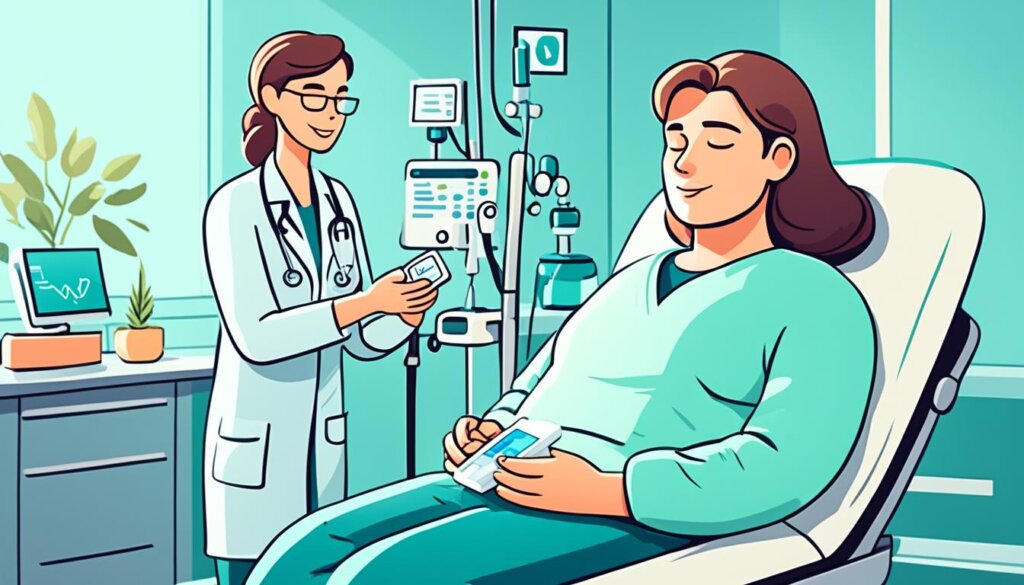
“Diabetic ketoacidosis is a medical emergency that requires prompt recognition and treatment to prevent serious complications and potential life-threatening outcomes.”
If you or someone you know has diabetic ketoacidosis symptoms like frequent urination, thirst, nausea, vomiting, and trouble breathing, get emergency help. Quick action can greatly help with recovery and future health.
Age Group | Percentage of DKA Episodes |
|---|---|
Younger than 30 years | 36% |
30 to 50 years | 27% |
51 to 70 years | 23% |
Older than 70 years | 14% |
Remember, quick and right treatment for diabetic ketoacidosis is key to avoiding serious issues and helping the patient recover.
Prevention of Diabetic Ketoacidosis
Managing your diabetes well is key to avoiding diabetic ketoacidosis (DKA). This means eating right, staying active, and taking your diabetes meds as your doctor says. Also, watch your blood sugar and adjust your insulin when needed, like when you’re sick or stressed.
Checking your ketone levels often is a big step in stopping DKA. You can use a test kit from a store to check this. If you see high ketones or feel bad, like stomach pain or confusion, call your doctor fast.
| Preventative Measures for Diabetic Ketoacidosis |
|---|
|
By acting early to manage your diabetes, you can lower your risk of DKA and its dangers.
“Effective diabetes management is key to preventing diabetic ketoacidosis. Closely monitoring your blood sugar, adjusting insulin, and seeking prompt medical attention can make all the difference.”
Complications of Diabetic Ketoacidosis
Diabetic ketoacidosis (DKA) is a serious diabetes complication. It can lead to life-threatening issues if not treated quickly. Common problems include low blood sugar, low potassium, and brain swelling.
Hypoglycemia, or low blood sugar, is a big risk during DKA treatment. This happens if blood sugar drops too fast. It’s important to watch and manage blood sugar levels closely.
Hypokalemia, or low potassium levels, is also a concern. Kids with DKA often lose a lot of potassium. Keeping potassium levels right is key during treatment.
Cerebral edema, or brain swelling, is a serious issue. It’s more common in kids and teens with DKA. It can cause loss of consciousness and even death if not treated fast.
It’s vital to watch for and manage these risks during treatment. Quick medical help and careful management of blood sugar, electrolytes, and fluids are crucial. They can lessen the risks and help people with diabetic ketoacidosis.
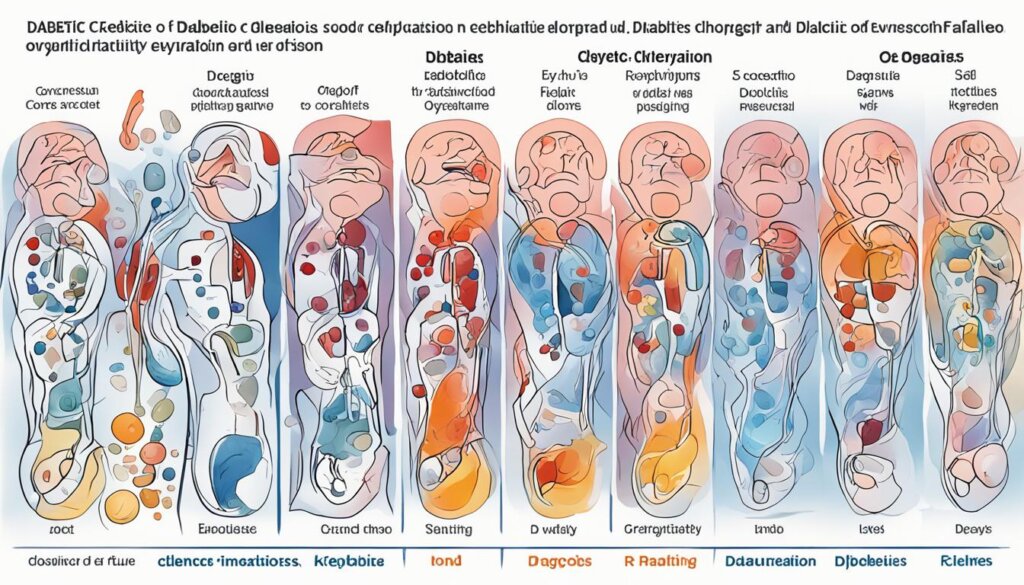
Managing Diabetes to Prevent Diabetic Ketoacidosis
Managing your diabetes well is key to avoiding diabetic ketoacidosis (DKA). This means eating healthy, staying active, and taking your diabetes meds as your doctor says. It’s also important to watch your blood sugar and adjust your insulin when needed, especially when you’re sick or stressed.
Using an over-the-counter test kit to check ketone levels can warn you of a problem before it gets worse. If you see high ketone levels or feel bad, get help fast to stop DKA.
- Eat a healthy, balanced diet to keep your blood sugar stable.
- Stay active with activities like walking, swimming, or cycling to help your body use insulin better.
- Keep taking your diabetes meds, even if you’re not feeling well or your eating habits change.
- Check your blood sugar often, especially when you’re sick or stressed, and change your insulin as needed.
- Use a test kit to check ketone levels and see a doctor if they’re too high.
By managing your diabetes well, you can lower your risk of getting diabetic ketoacidosis and other problems. Regular doctor visits and paying attention to your body can help you keep your diabetes under control and prevent serious issues.
Key Steps to Prevent Diabetic Ketoacidosis | Description |
|---|---|
Healthy Eating | Eat foods that help control your blood sugar, like whole grains, fruits, veggies, and lean meats. |
Physical Activity | Exercise regularly to make your body more sensitive to insulin and better control your blood sugar. |
Medication Management | Always take your diabetes meds as told, even if you’re sick or your routine changes. |
Blood Sugar Monitoring | Check your blood sugar often and adjust your insulin as needed. |
Ketone Testing | Use test kits to check for high ketone levels and get help if they’re too high. |
By eating right, staying active, and watching your blood sugar and meds, you can greatly lower your risk of diabetic ketoacidosis and other serious issues.
When to Seek Emergency Care for Diabetic Ketoacidosis
Diabetic ketoacidosis (DKA) is a serious condition that needs quick medical help. If you have diabetes and notice any of these signs, get emergency care right away:
- A blood sugar level over 300 mg/dL that doesn’t respond to home treatment
- Moderate or high ketone levels in your urine
- Multiple DKA symptoms, like a lot of thirst, needing to pee a lot, feeling sick, or trouble breathing
- Not being able to keep food or liquids down
DKA can be very dangerous if not treated. It’s important to know the signs and get help fast. Things like missing an insulin dose, eating poorly, stress, or infections can cause DKA.
If you’re worried about your diabetes or think you might have DKA, call your doctor or go to the emergency room. Quick action is key to avoid serious problems and keep you safe.
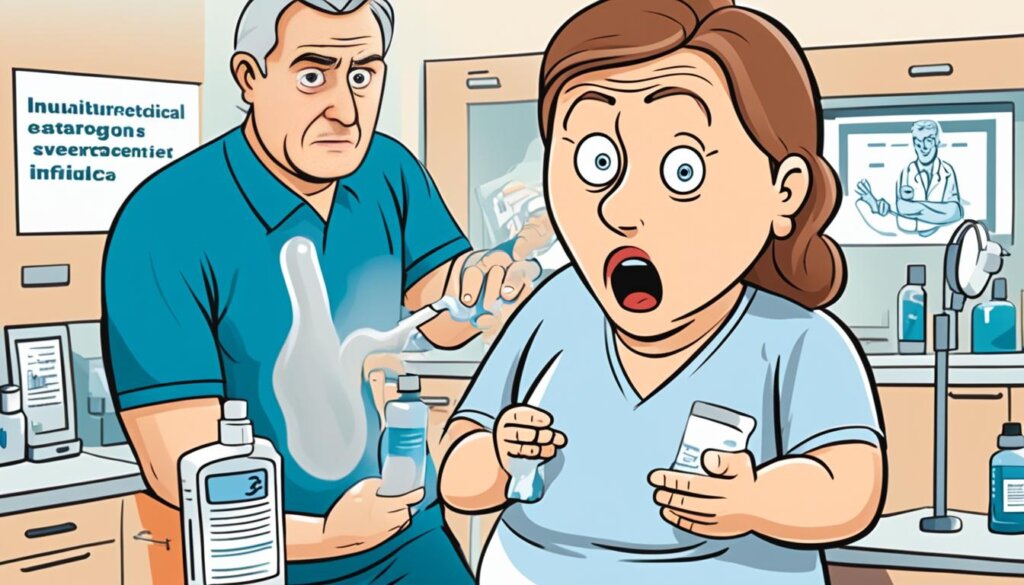
“Diabetic ketoacidosis is a serious condition that needs immediate medical help. Knowing the signs and getting help quickly can save your life.”
Diabetic Ketoacidosis
Diabetic ketoacidosis (DKA) is a serious condition that happens when the body lacks enough insulin. Without insulin, the body starts to break down fat for energy. This makes acids called ketones. If these ketones build up too fast, it can make the blood too acidic, a condition called diabetic ketoacidosis. This condition needs quick medical help to prevent serious problems or even death.
DKA can happen fast, showing symptoms in just 24 hours. It mostly affects people with type 1 diabetes, but sometimes it can happen with type 2 diabetes too. If your blood sugar is over 300 mg/dL or 16.7 mmol/L, you need to get emergency care.
Things that increase the risk of DKA include missing insulin doses and going through stress or injury. After treatment, you might face problems like low blood sugar, low potassium, or swelling in the brain. To avoid DKA, check your blood sugar often, adjust your insulin as needed, and manage your diabetes well.
If DKA is not treated, it can cause loss of consciousness and even death. It’s important to know about the causes, signs, and how to handle this serious condition if you have diabetes.
Statistic | Value |
|---|---|
Estimated annual incidence of DKA from population-based studies in the 1980s | 4 to 8 episodes per 1,000 patient admissions with diabetes |
DKA hospitalizations in the US in 2009, 2014, and 2017 | 140,000 in 2009, 168,000 in 2014, and 220,340 in 2017 |
DKA hospitalization rates in 2014 by age group | Highest in persons aged 2 |
Hospital admissions for HHS compared to DKA | Lower than for DKA and account for less than 1% of all diabetic-related admissions |
Emergency department visits with a diagnosis of hyperglycemic crisis in 2014 | 207,000 |
Annual direct medical expense of DKA in 1997 | 2.4 billion USD |
Cost of inpatient DKA care in the US in 2014 | 5.1 billion USD with charges varying between 20-26 thousand USD per admission |
Mortality rate for DKA and HHS | DKA remains under 1%, while it can reach up to 20% in HHS |
Deaths caused by hyperglycemic crisis among adults aged 20 years or older in 2010 | 2,361 |
DKA admissions cost in 2017 | 6.76 billion USD, corresponding to around 31 thousand USD per admission |
The highest risk of being admitted with DKA | Patients who are black, female, and/or have Medicaid insurance |
Diabetic ketoacidosis is a serious and potentially life-threatening complication of diabetes that requires prompt medical attention.
“Untreated diabetic ketoacidosis can lead to loss of consciousness and death.”
Conclusion
Diabetic ketoacidosis (DKA) is a serious diabetes complication that needs quick medical help. It happens when blood sugar is too high and can cause dehydration, electrolyte problems, and even coma. Sadly, over 3,000 kids under 18 in England get hospitalized for DKA every year.
To stop DKA, managing your diabetes well is key. This means eating right, checking your blood sugar and ketones, and getting help when you need it. Even though DKA is more common now, especially in young people, new treatments have made it less deadly. Knowing about DKA can help you protect your health and avoid big problems.
Keeping your diabetes under control and knowing the signs of DKA are important. Quick action to get medical help can save your life. By focusing on your health and managing your diabetes well, you can lower the risk of DKA and live a healthier life.
FAQ
What is diabetic ketoacidosis?
Diabetic ketoacidosis (DKA) is a serious diabetes complication. It happens when the body lacks enough insulin. Without insulin, the body starts breaking down fat for fuel, making acids called ketones. These acids can make the blood too acidic, which is very dangerous.
What are the symptoms of diabetic ketoacidosis?
Symptoms of DKA can come on fast, often in just 24 hours. They include being very thirsty, needing to pee a lot, feeling sick to your stomach, having belly pain, feeling weak, short of breath, having a sweet smell on your breath, and feeling confused.
What causes diabetic ketoacidosis?
DKA usually happens when there’s not enough insulin in the body. It can be caused by being sick, missing insulin doses, issues with insulin therapy, physical or emotional stress, and some medicines.
Who is at risk of developing diabetic ketoacidosis?
People with type 1 diabetes, especially those who often miss insulin doses, are most at risk for DKA. New diabetes patients and those without easy access to insulin are also at higher risk.
How is diabetic ketoacidosis detected and monitored?
Check your ketone levels with a urine or blood test if your blood sugar is over 240 mg/dL. Get emergency help right away if your blood sugar is 300 mg/dL or higher and doesn’t go down, or if you have DKA symptoms.
How is diabetic ketoacidosis treated?
DKA is treated in the hospital or ER. Doctors give fluids and electrolytes to replace what you lost, and insulin to fix the DKA.
How can diabetic ketoacidosis be prevented?
Manage your diabetes with healthy eating, exercise, and taking your diabetes medicines as told. Watch your blood sugar closely and adjust your insulin when needed, especially when you’re sick or stressed.
What are the potential complications of diabetic ketoacidosis?
DKA can lead to low blood sugar, low potassium, brain swelling, and, if not treated, loss of consciousness and even death.
When should you seek emergency care for diabetic ketoacidosis?
Get emergency help right away if your blood sugar is over 300 mg/dL and doesn’t go down if you have moderate or high ketones, have many DKA symptoms, or can’t keep food or liquids down.
